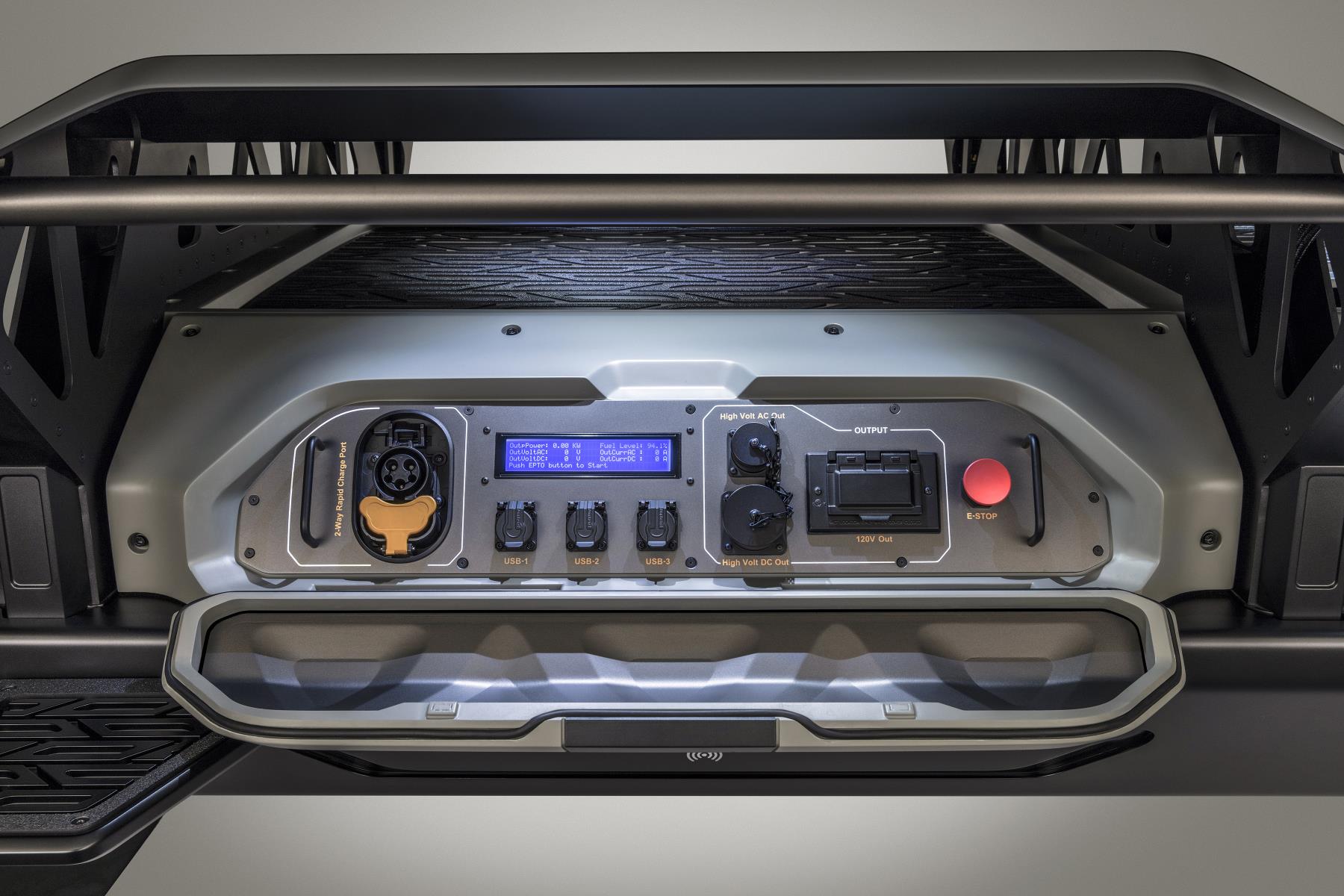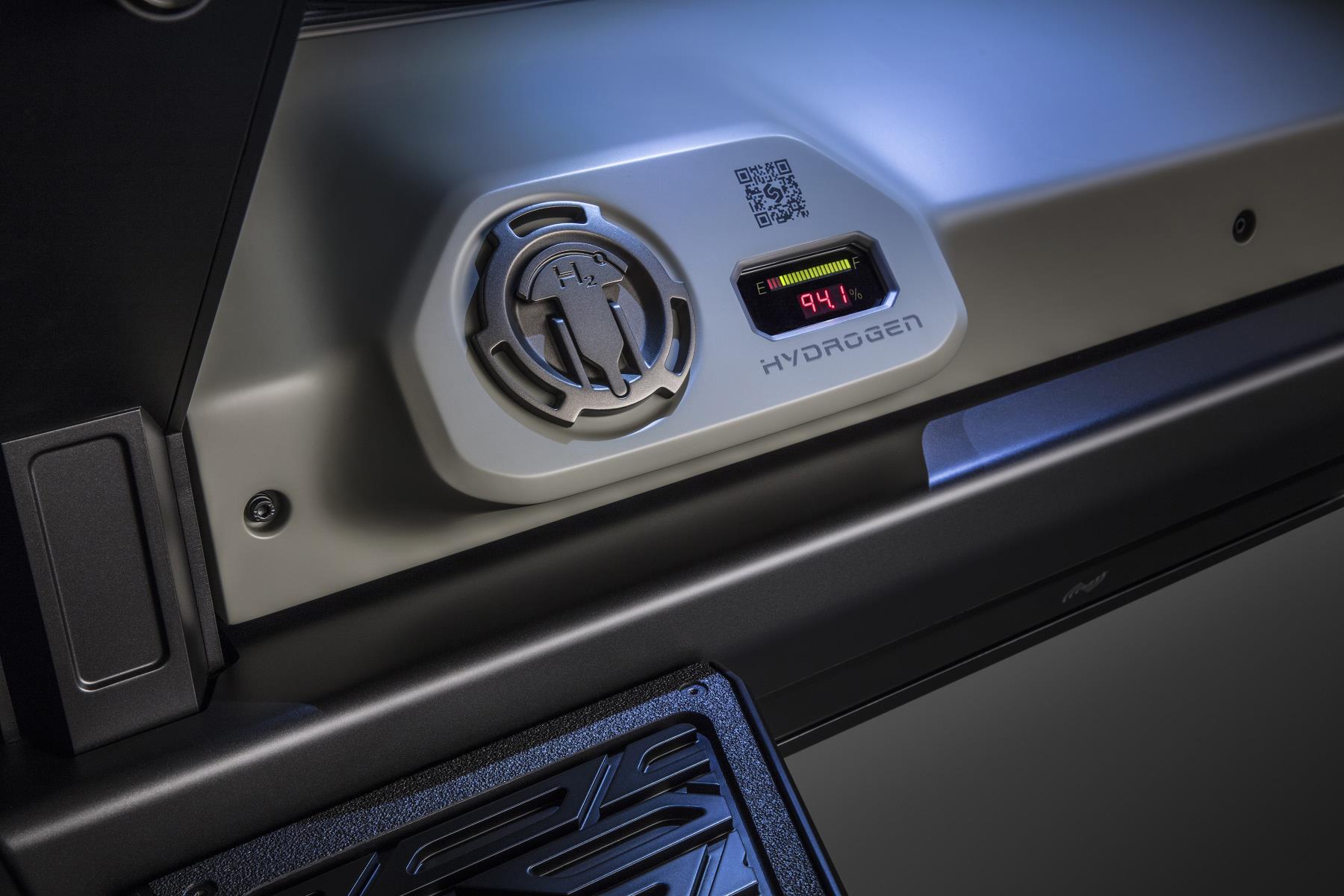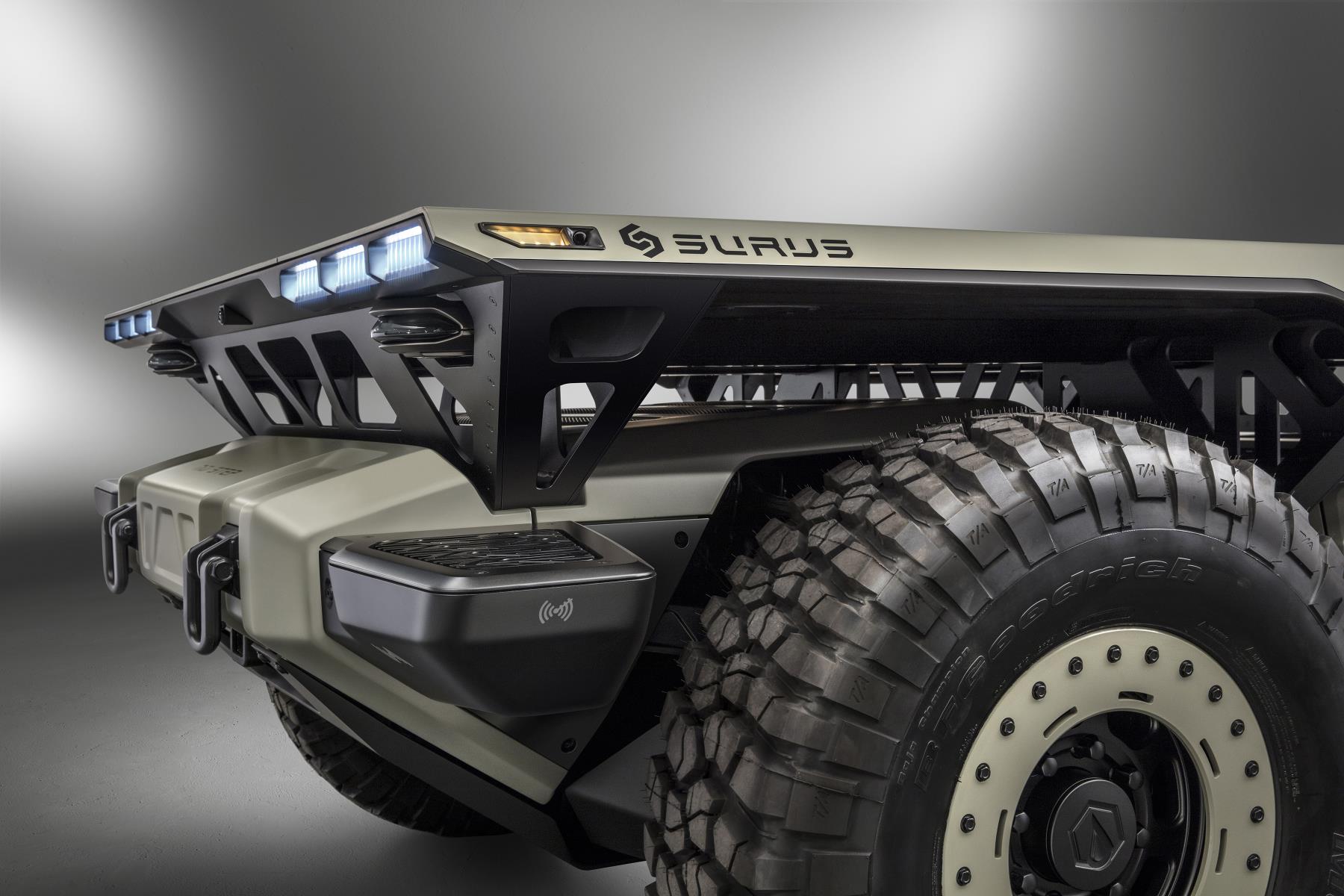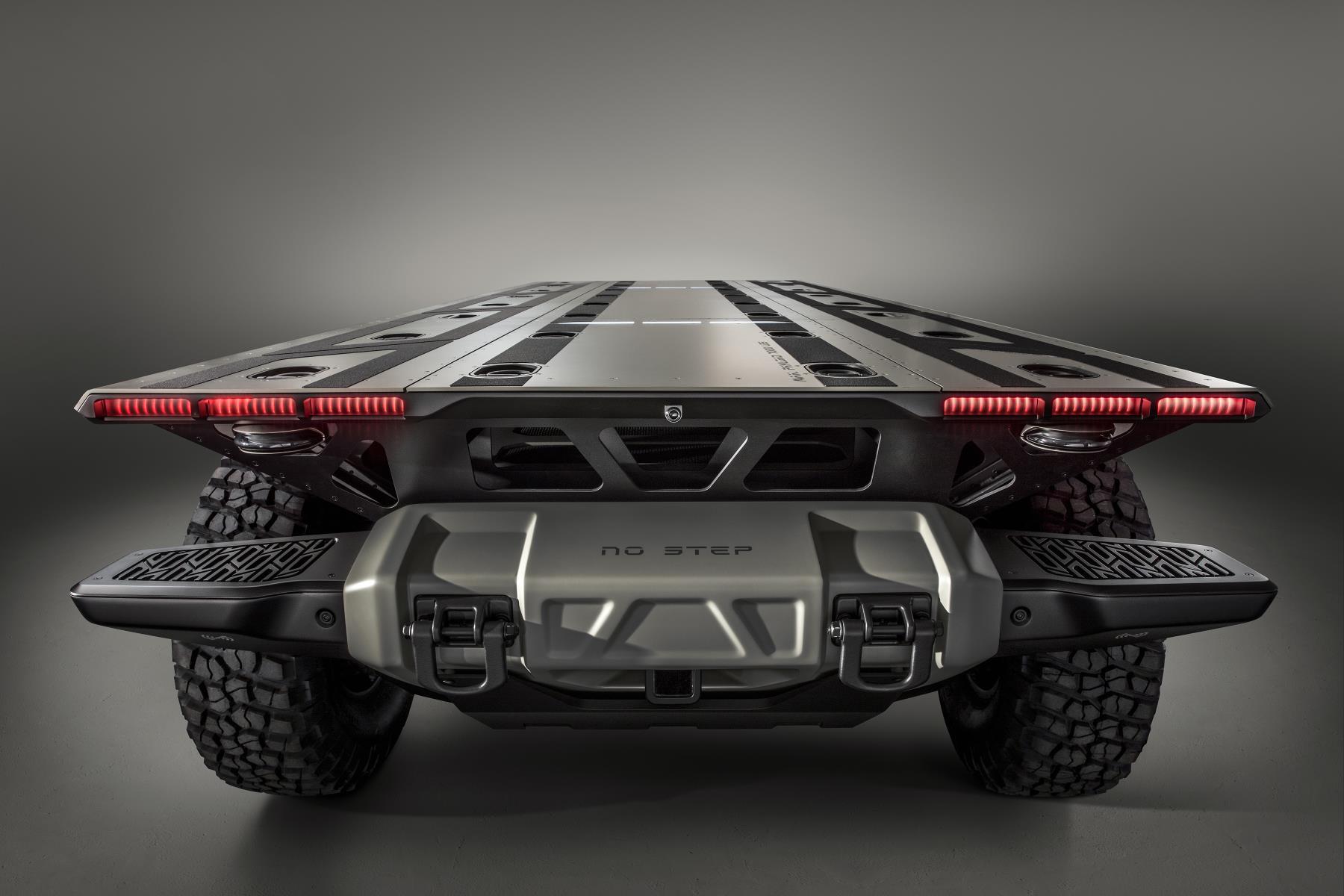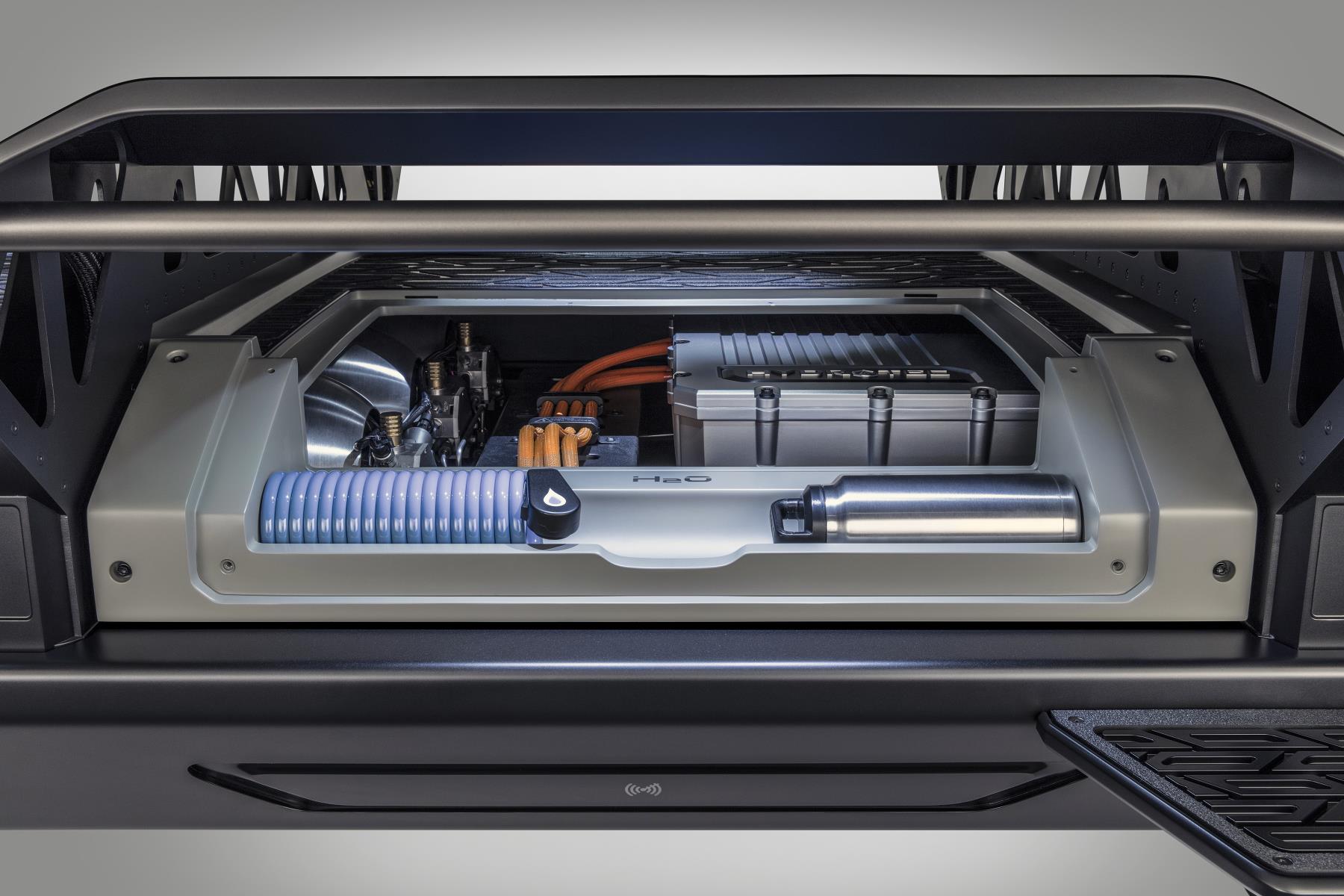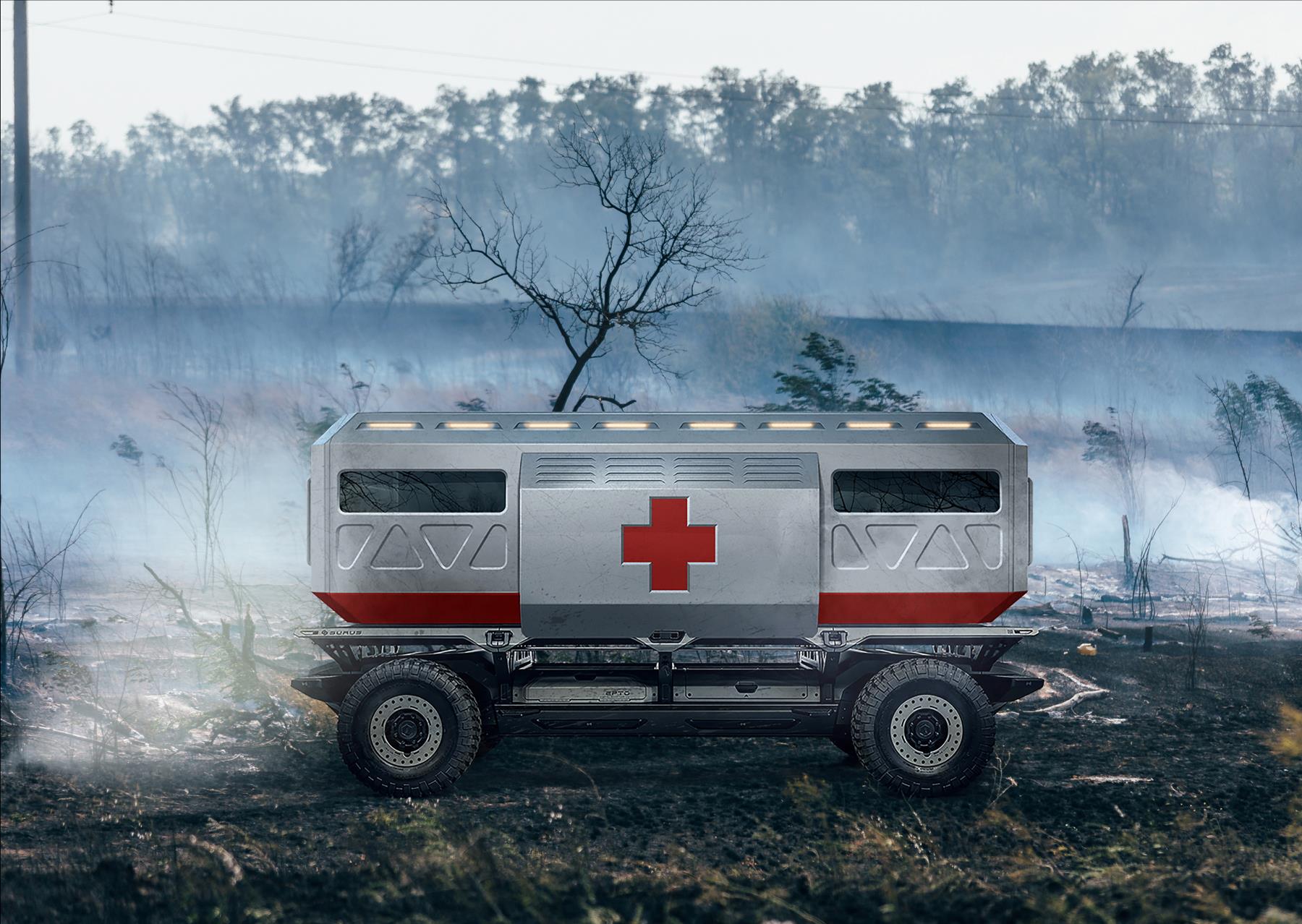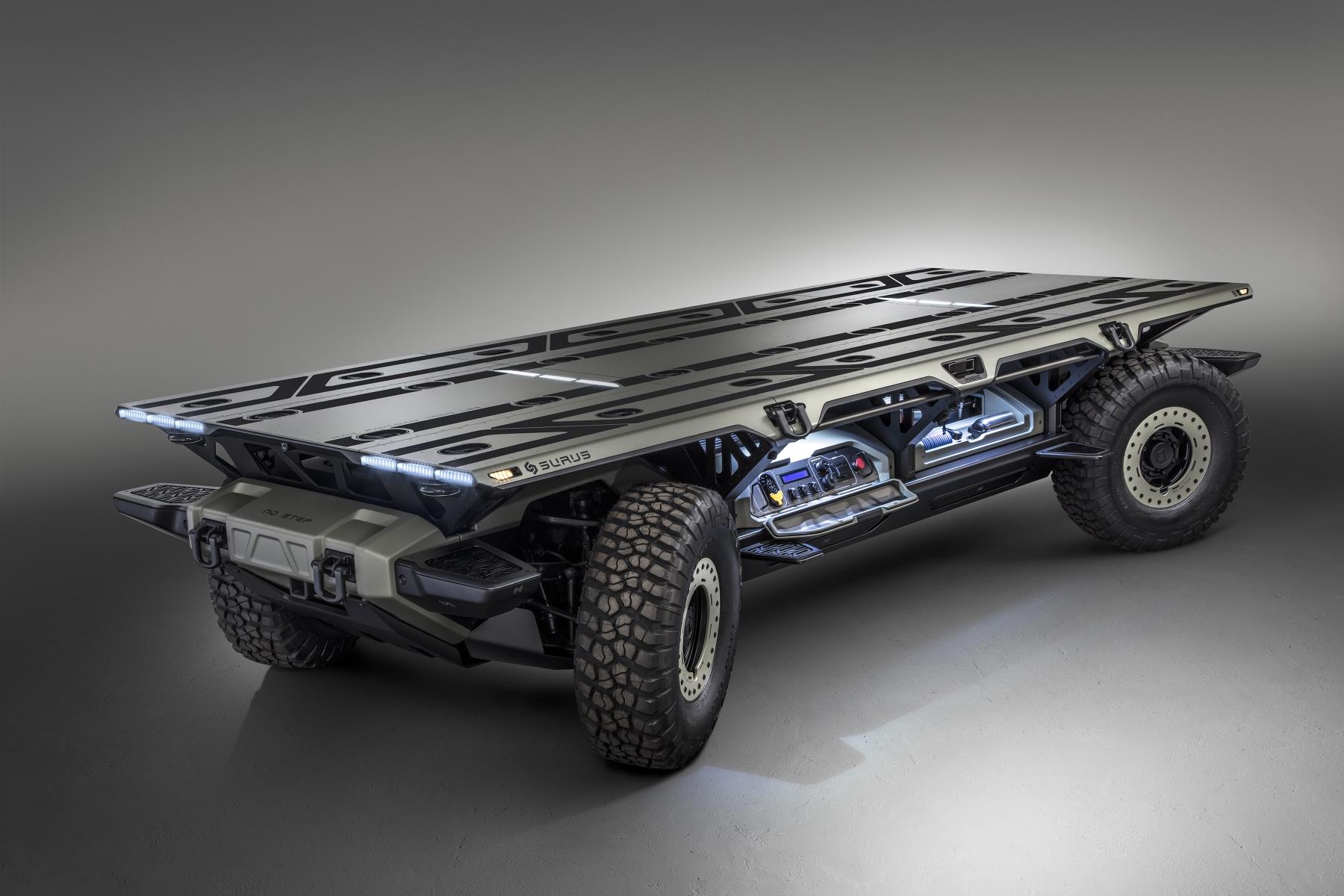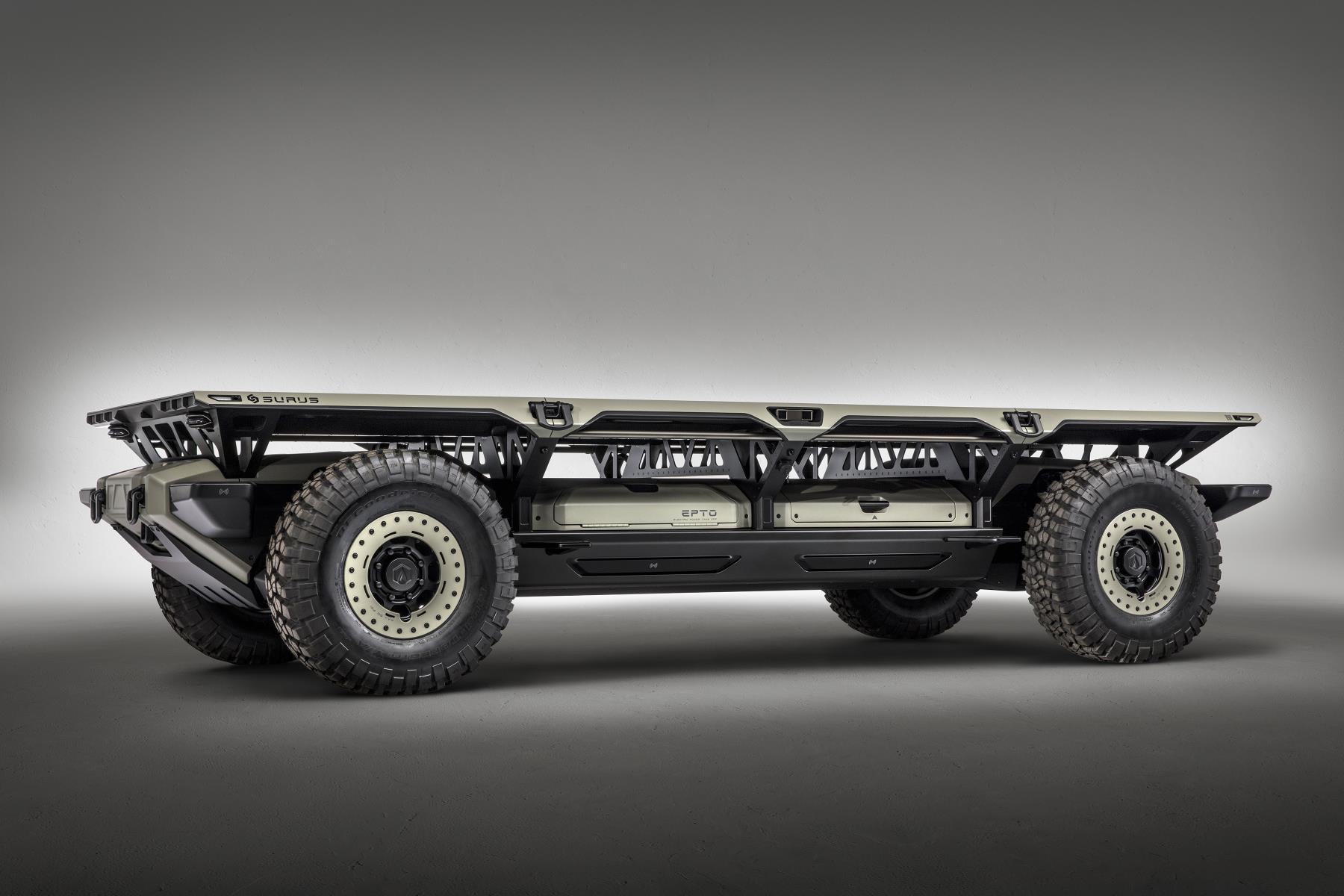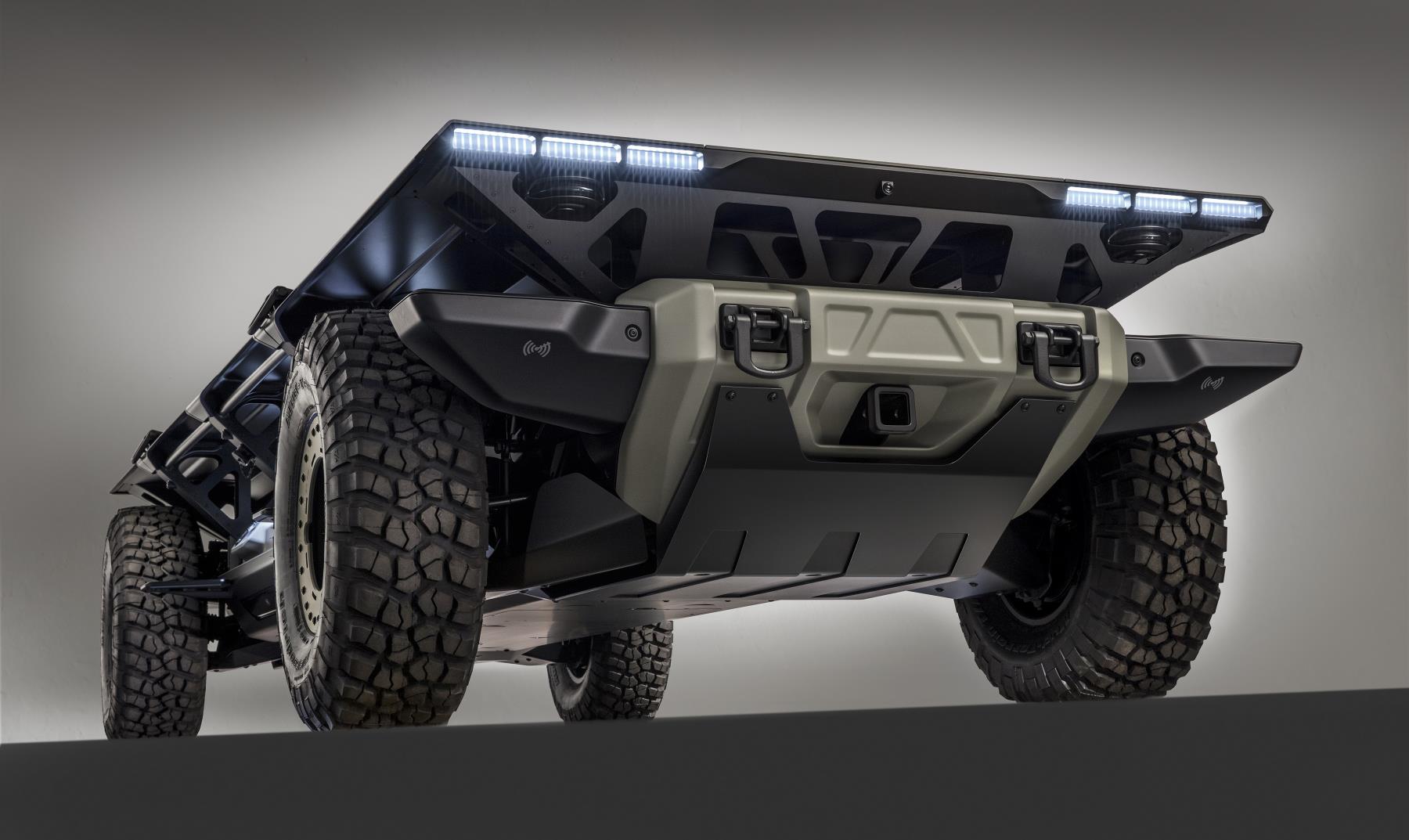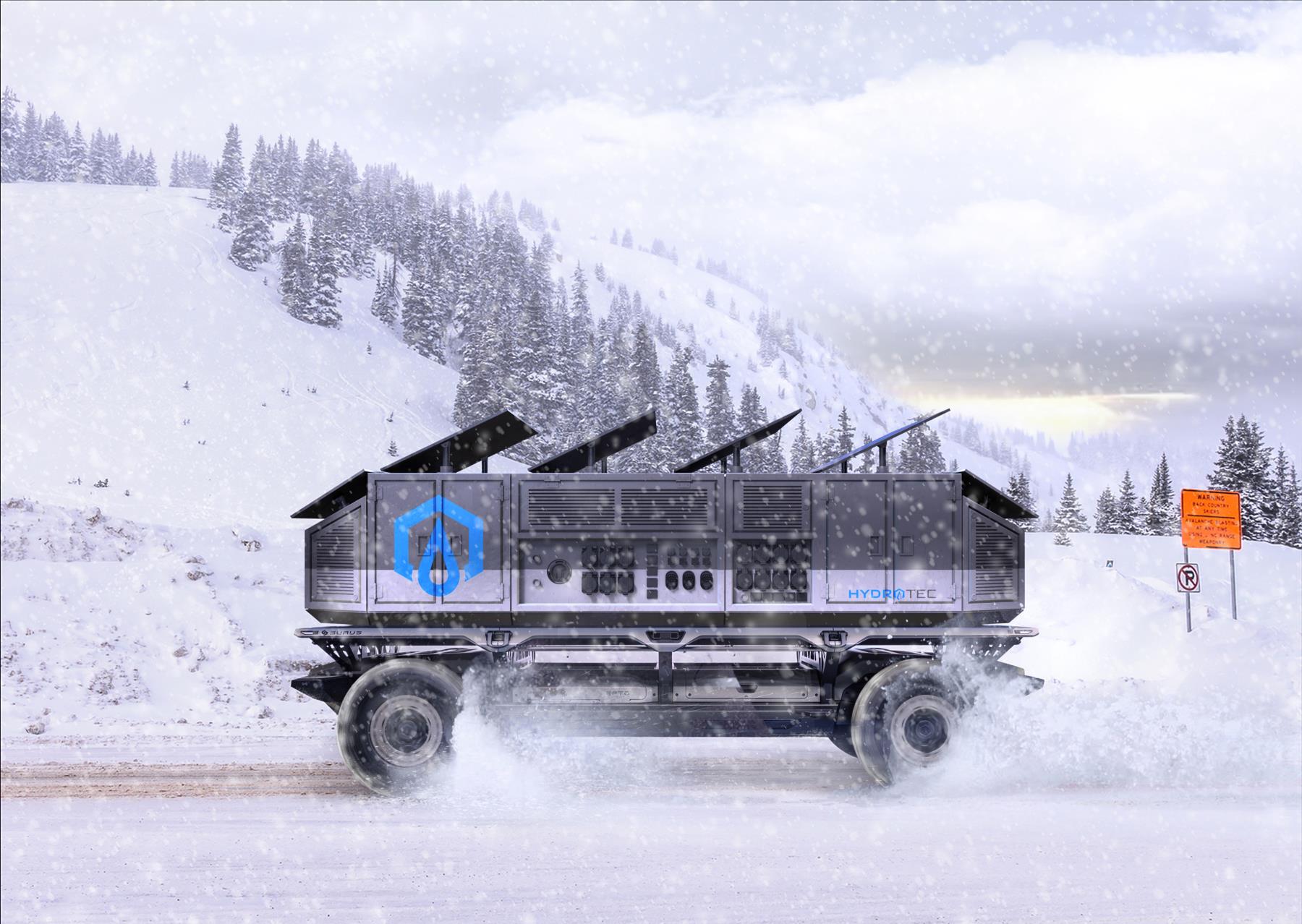GM outlines possibilities for flexible, autonomous fuell cell platform
; Date: October 6, 2017
Tags: General Motors »»»» Electric Cars »»»» Fuel Cell Vehicles
Earlier this week GM announced a plan to transition to all-electric vehicles. Curiously the only vehicle mentioned in the announcement was a fuel cell autonomous vehicle platform, which is a non-electric hydrogen powered vehicle type. Here is the announcement concerning that fuel cell vehicle platform, and the fact that it's targeted at the military and heavy duty trucking sectors.
The military faces a deadly problem with "regular" military vehicles, because of the necessity to deliver fossil fuels to the field. The delivery process exposes more soldiers to harm because delivering fuel to remote outposts requires driving convoys through possibly hostile territories. The military has been interested for several years in other energy systems if only to reduce the risk to soldiers. You might think that instead of invading countries willy nilly for unclear reasons and terrorising the population so badly they want to fight back, that the best choice would be to pull out and say we're sorry and try to make amends. But the political leadership we have instead wants to keep the war going and obviously I've flown off into tangent land.
That tangent was meant to explain why the press release stresses "minimize logistical burdens and reduce human exposure to harm." Clearly this Association of the United States Army meeting will include some attention on the issue of mitigating risks from delivering fuel to dangerous territory.
I don't understand why General Motors thinks this is a solution to the named problem. Fuel cell vehicles require pure hydrogen. Since it's difficult to deliver fuel to a remote outpost in hostile territory, how does switching to hydrogen fuel make any difference? The hydrogen still has to be delivered to the field.
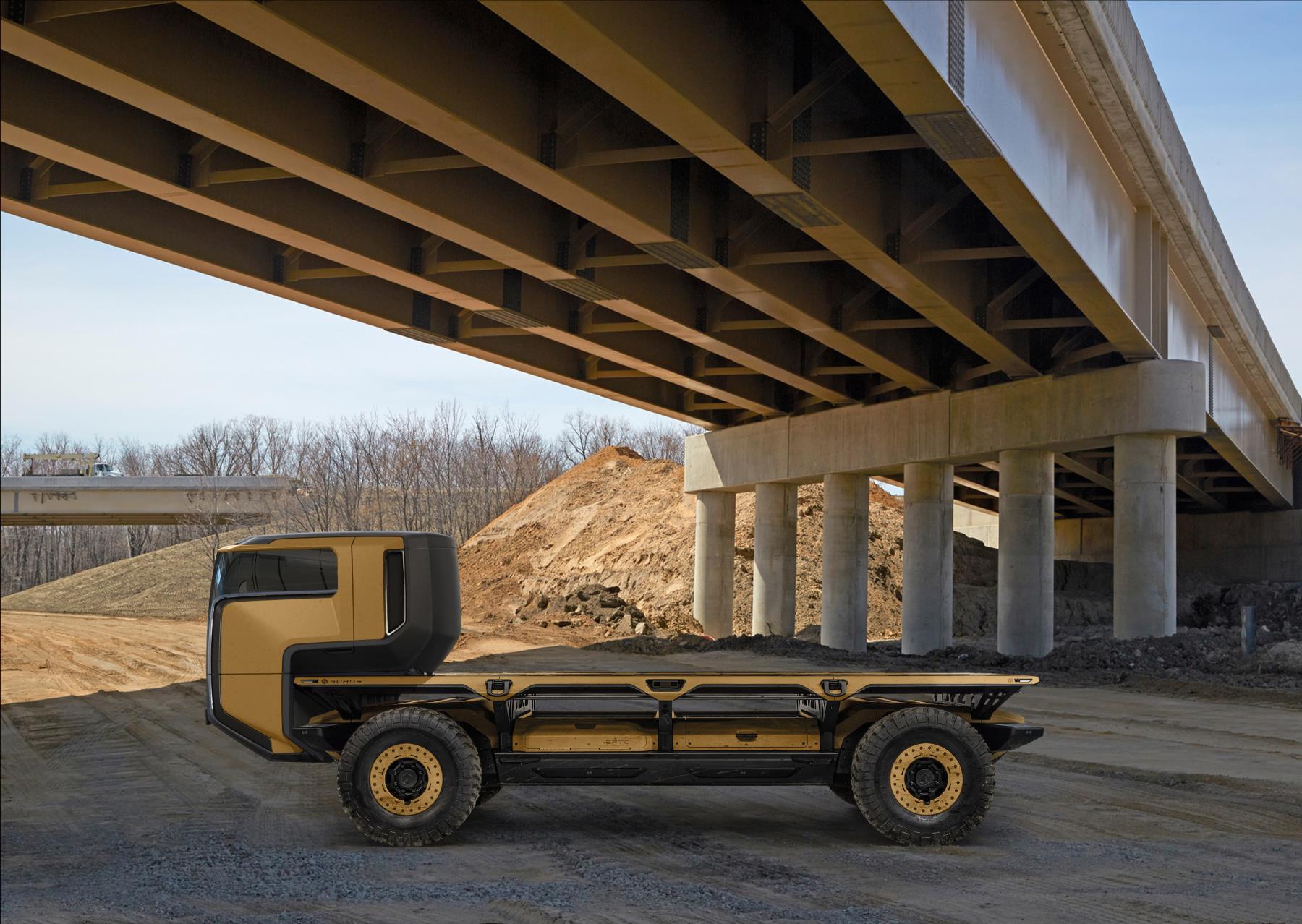
Washington, D.C. — General Motors aims to solve some of the toughest transportation challenges created by natural disasters, complex logistics environments and global conflicts. The company will display its Silent Utility Rover Universal Superstructure (SURUS), a flexible fuel cell electric platform with autonomous capabilities, at the fall meeting of the Association of the United States Army (AUSA) from Oct. 9-11, 2017. The commercially designed platform could be adapted for military use.
SURUS leverages GM’s newest Hydrotec fuel cell system, autonomous capability and truck chassis components to deliver high-performance, zero-emission propulsion to minimize logistical burdens and reduce human exposure to harm. Benefits include quiet and odor-free operation, off-road mobility, field configuration, instantaneous high torque, exportable power generation, water generation and quick refueling times.
Fuel cell technology represents a key piece of General Motors’ zero emission strategy. It offers a solution that can scale to larger vehicles with large payload requirements and operate over longer distances. SURUS was designed to form a foundation for a family of commercial vehicle solutions that leverages a single propulsion system integrated into a common chassis. The SURUS platform is equally well-suited for adaptation to military environments where users can take advantage of flexible energy resources, field configurability and improved logistical characteristics.
GM is evaluating multiple applications for SURUS, such as:
- Utility trucks
- Mobile and emergency backup power generation
- Flexible cargo delivery systems
- Commercial freight
- Light- and medium-duty trucks, improving upon the Chevrolet Colorado ZH2 that has been evaluated by the U.S. military under guidance of the U.S. Army Tank Automotive Research, Development and Engineering Center (TARDEC) and is undergoing testing on bases
- Future military-specific configurations
- SURUS will deliver highly mobile autonomous capability and agility in unpredictable terrain. Operating multiple vehicles in a leader-follower configuration could reduce manpower needed. For future potential military uses, the system’s inherent low heat signature and quiet operation offer benefits in environments to reduce detection and risks. TARDEC has been in discussions with GM evaluating the commercial SURUS concept as a next step of the broader collaboration to evaluate fuel cell technology for future military applications.
“SURUS redefines fuel cell electric technology for both highway and off-road environments,” said Charlie Freese, executive director of GM Global Fuel Cell Business. “General Motors is committed to bringing new high-performance, zero-emission systems to solve complex challenges for a variety of customers.”
The SURUS platform leverages GM’s vast experience in fuel cell technology, high-voltage batteries and electric drive systems, autonomous driving and vehicle manufacturing. The platform boasts:
- Two advanced electric drive units
- Four-wheel steering
- Lithium-ion battery system
- Gen 2 fuel cell system
- Hydrogen storage system capable of more than 400 miles of range
- Advanced propulsion power electronics
- GM truck chassis components
- An advanced, industry-leading suspension
Hydrotec Technology
The SURUS commercial platform draws on GM’s more than 50 years of research and development of fuel cell technology. The scalable and adaptable technology enables land, sea and air applications across commercial and military environments.
Since April 2017, the Army has been testing the commercial Chevrolet Colorado ZH2 on its U.S. bases to determine the viability of hydrogen-powered vehicles in military mission tactical environments. The vehicle has been operating in off-road conditions to evaluate its power generation, reduced odor, acoustic and thermal signatures, high wheel torque, extended operating range and the potential to use the byproduct water.
Military testing has shown the ZH2 reduced acoustic non-detection distance by 90 percent compared to current military vehicle in operation. This means the ZH2 can get 10 times closer before being detected. Leaders also observed the potential advantages for stationary power generation over diesel generators, including a significant reduction in idle noise and fuel use. Testing will continue through spring 2018.
Partnerships remain an important part of GM’s electrification strategy. Last year, the U.S. Navy unveiled a GM fuel cell-powered Unmanned Undersea Vehicle (UUV) for testing purposes that leverages GM fuel cell technology common with the Colorado ZH2.
General Motors Co. (NYSE: GM, TSX: GMM), its subsidiaries and joint venture entities produce and sell vehicles under the Chevrolet, Cadillac, Baojun, Buick, GMC, Holden, Jiefang and Wuling brands. GM has leadership positions in several of the world's most significant automotive markets and is committed to lead the future of personal mobility. More information on the company and its subsidiaries, including OnStar, a global leader in vehicle safety, security and information services, can be found at
http://www.gm.com.
